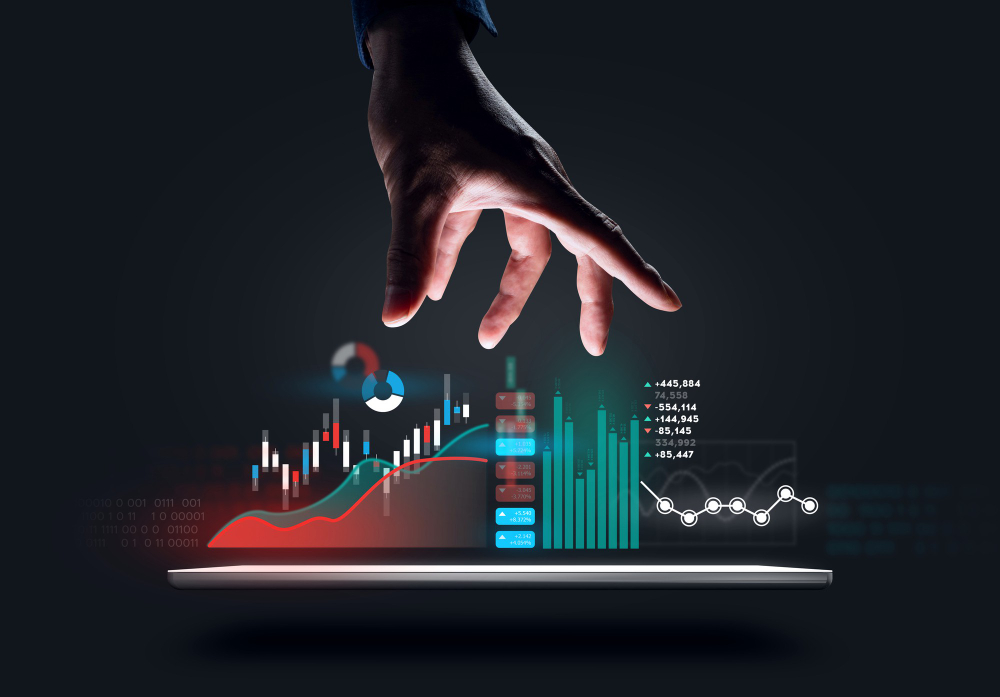Knowing how much to invest in stocks and how long to hold that investment can be challenging. Truthfully, without considering inflation, the stock market has historically had average returns of roughly 10%. However, what does that imply for you? Can you depend on this rate, too? Here, it is the specifics of the stock market rate of return, how it relates to inflation, and how you can take advantage of the average rate of return. Consider consulting a financial counsellor for suggestions on what to invest in and how long to hold each investment.

Rate of Return on the Stock Market
Let’s start by clarifying that when we speak to the stock market here, we refer exclusively to the S&P 500—an index known as the S&P 500, established in 1926. The 500 most significant American publicly traded firms are followed in terms of performance.
The S&P 500 has historically returned 10% annually on average since its inception. But that doesn’t necessarily indicate that every year will be the same. Remember that the percentage will increase by 10% a year. This means that a year like 2021 when the market had nearly 20% gain, balances out a year like 2015, when the index experienced a -2.97% decline.
The market has changed by +12.63% annually, including dividends, if only considering the ten years from 2012 to 2021. This indicates that if you placed $1,000 in an index fund in 2013 that matches the return on the stock market, you would have $4,252.31 provided you reinvested all dividends. That represents an ROI of 260.3%.
Stock Market Return Rate on Inflation
When examining stock market returns, inflation is a vital consideration. Although the Federal Reserve strives to keep inflation, in theory, at 2%, the actual level varies yearly. For instance, it is predicted that in 2022 the annual inflation rate will be around 8.2%. With an average return rate of -16.15% through September 2022, this year’s market is declining, making losing money more difficult. You not only lost money this year, but your money now has less purchasing power than it did in 2021.
However, the average inflation rate for the ten years between 2012 and 2021 is 1.88%. With inflation taken into account, the 12.63% rate of return translates into 10.75% higher purchasing power annually. Including years like 2022 will raise the average, but even then, the standard for the 11 years from 2012 to 2022 is 2.08%, which is quite close to the Fed’s target.
When Will My Investment Double If the Return Is 10%?
The rule of 72 provides a straightforward method for determining how quickly your investment will double on the stock market. The number of years it takes to double your investment may be calculated using the rule of 72 by simply dividing 72 by the yearly rate of return.
Years needed to double an investment equal 72 / yearly rate of return.
Therefore, 7.2 years will pass before the money doubles at our 10% rate of return. Note that depending on how high or low the return rate is, the rule of 72’s effectiveness changes. Anywhere between 6 and 10% is suitable. However, it needs to improve accuracy as you leave that range.
Rarely Is the Average Stock Market Return Attained
You’ll see that individual years rarely fall within the typical range when you look at the average rate of return on the stock market throughout time—in actuality, only seven different years between 8 and 12% declined since the S&P 500 began in 1926. The stock market may be unpredictable. Some years are incredibly prosperous, while others bust or fail. It’s the average that counts. The market average continues to grow over time because it has exceeded 20% for several years. Many investors have grown to rely on the 10% rate of return average, even if you may not be able to predict when a big year will occur.
Steps for Riding the Market Wave
There will be prosperous years and unsuccessful years for the stock market. You can plan for your strategy once you realize you will win and lose. Here are some pointers on how to adapt your perspective as the market shifts.
When the market rises, you are in a good mood, and your portfolio worth increases. Expect it not to last forever. What rises must inevitably fall. During this period, you can engage in some trading. Keep in mind that bull markets don’t persist forever.
As they say, buy the dip when the market is down. The time to sell your assets is not now if the market is slowing down. Keep your portfolio broad and try to buy some undervalued assets while the market is down.
Benefit from the average: Only by purchasing and holding assets for a long time will you experience the average stock market rate of return. Investing in assets with long-term growth potential is known as the “buy-and-hold” strategy. Holding an investment for 10, 20, or 30 years or more is having, not day trading.
When necessary, rebalance your portfolio. There are times when you’ll need to rebalance your portfolio. This lets you match your assets’ values to your objectives and risk tolerance. A rebalancing will guarantee that you have the ideal asset allocation for your requirements.
The Conclusion
In the long run, the rate of return on the stock market has generally been 10%, but it has yet to achieve this consistently. While other years reach 20% or more, others end up in the red. Because it affects your purchasing power, inflation is essential. However, even in years like 2022, when inflation is strong, it typically hovers around 2%. Buy-and-hold investors that select high-performing assets and invest in index funds that follow the development of the market stand to gain from the stock market’s average return. Long-term investments can benefit from the compounding rate of return, increasing wealth over time.



